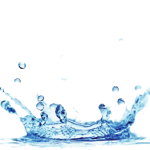Winterizing Your Pool
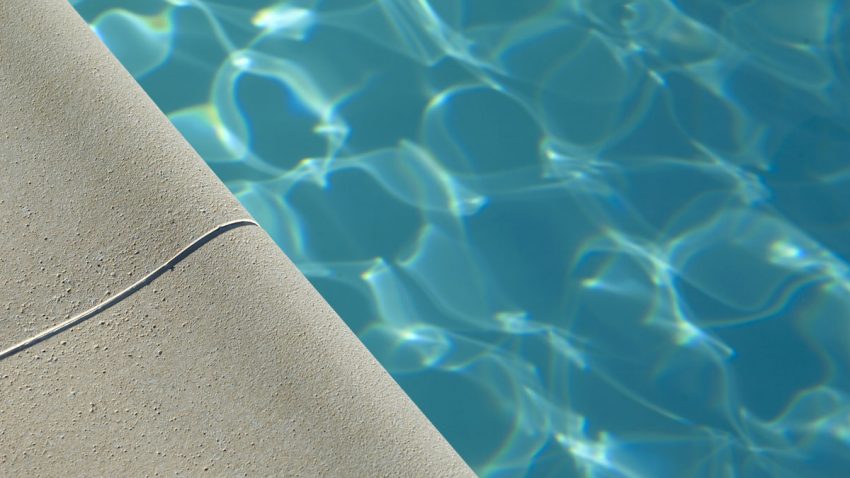
There are many things you need to do when winterizing your in-ground swimming pool. Read on to learn more.
You will need the following:
- Rubber plugs for every return valve and skimmer
- Winter chemical kit
- Pool cover
- Set of water tubes
- Leaf net
- Loops wrench
- Five gallon bucket
- Flat and Phillips Screwdrivers
Tasks
- Measure the pool so you know the correct size leaf net and winter cover.
- Make sure you have enugh water tubes to completely go around the circumference of your swimming pool.
- Remove any toys and floats from the pool
- Clean remianing debris from the pump basket, skimmer and also skim the pool one final time before installing the cover. This will prevent debris from lingering and save time in the spring.
- Onstructions including ladders and diving boards should be removed.
- Chemically treat the pool so it is fully fortified during the winter season
- Before adding pool shock, grab a bucket and fill it three-quarters of the way up with water.
- When mixed, pour the content into the pool as you walk around the edge, Every ten thousand gallons of water needs one pound of shock to be effective.
- Algaecide or scale remover can then be added without diluting with water.
- Lay out the length of the cover at poolside and have a different person on the otherside of the cover. Grip the edge of the cover and walk it over the pool surface. Try to minimize the water on top of the cover as it can weigh it down.
- Completely secure the winter cover with water tubes providing a strong base for the cover while the net is installed and preventing wind from catching the cover.
- Then slide the winter cover into position and palce the leaf net on top of that cover.
- Applying the leaf net takes the same actions as applying the winter cover.
- With net and cover in place, go around the edge of the pool and tie an extra knot in each and every loop so the slack is fully picked up. Ensure both cover and net are tucked well under the tube.
- When the pool has obstructions your leaf net may have to be altered to accomodate using a bungee cord.
- Lastly, do an inspection of your work and make sure everything is secure.
Finding Professional Pool Maintenance In Arizona
Brian’s Pool Care offers professional pool maintenance in Ahwatukee, Arizona to help pool owners experience expert pool maintenance services for an affordable price.
Pool Chemicals 101
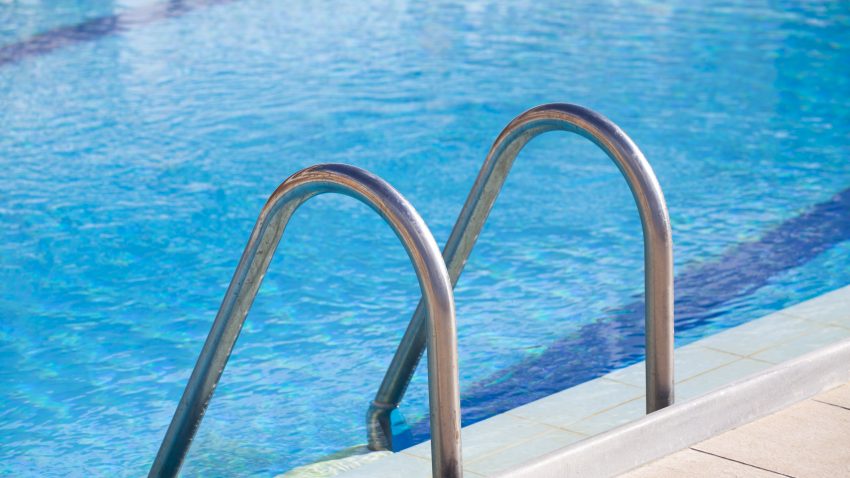
There is a multitude of pool care products available and not only is it tough to understand what role they play in keeping the pool water balances. Read on to learn more about pool chemicals, what they consist of and what they do for your swimming pool!
What Are The Primarily Important Pool Chemicals?
- Algaecides
- Sanitizers
- pH Balancers
- Alkalinity Balancers
- Hardness Balancers
- Pool Shock
What Do Pool Chemicals Do?
- Algaecides: These are used to stop the growth of algae in your pool and to provide prevention so algae does not grow from the outset.
- Alkalinity Balancers: These maintain a safe range of alkalinity to ensure your swimming experience is comfortable.
- Alkalinity Increaser: It raises the level of alkalinity. If you have low total alkalinity it may cause the pool water to become corrosive to plaster, metal and other materials causing etching, staining or distortion of various surfaces in and around your pool. Correct Alkalinity prevents these issues and eliminates what is colloquially known as “pH bounce” providing a buffer against large changes of the pH in the water. For pools with vinyl later, the alkalinity range should be 80-120 and 125-150 is ideal for other types of pools.
- Calcium Hardness Increaser: This raises the level of calcium hardness in the water of the swimming pool. Low calcium levels cause hardness issues and may cause the pool water to become corrosive, resulting in etching, staining, and pool finish distortion. Plaster effected by this may become uncomfortable and abrasive for swimmers. Rough plaster can also be a cause of algae problems and makes the cleaning process far tougher.
- Chlorine Stabilizer: This helps maintain the pool chlorine and helps chlorine depletion because of the effect of sunlight. The filter or backwash needs to be cleaned before the addition of the product to the pool. The pH of the pool should be in the 7.2 to 7.8 range.
- Hardness Balancers: These keep your pool in the ideal calcium hardness range of 200-300 ppm.
- pH Balancers: These maintain a healthy pH range in your pool. pH Down is a chemical in a granular form designed to slowly lower the PH of your pool water. Conversely, pH Increase does the opposite. pH should ideally be between 702 and 708 for ideal best water quality and chlorine activity. For vinyl liner pools, the ideal pH is 7.6. Always use an accurate and reputable pH testing kit as it is one of the most important aspects of pool maintenance.
- Pool Shocks: When the sanitizer is overworked, pool shocks clean your pool after many people have used it following rainfall. By shocking your pool, you eliminate bacteria without taking a toll on the chlorine levels. it goes a long way in keeping the pH balanced.
- Sanitizers: Perhaps the greatest chemical that can be used to kill off bacteria and keep algae, viruses and other contaminants from forming in your water. The two most popular types of sanitizers are bromine and chlorine.
Advantages of Using A Professional Pool Service
Professional and experienced Technicians must be familiar with engineering, plumbing, electrical components and chemistry to service your pool properly. However, many national companies who have high rates of turnover because of low pay frequently rely on inexperienced new employees. However, a local expert will likely offer a level of experience, ability and local knowledge that are worth a great deal. You should also search for and read positive online reviews for companies near to where you are located.
Free Pool Cleaning Estimates in Ahwatukee, Arizona
Receive a free pool care estimate in Ahwatukee, Arizona, by giving BPC Pool Maintenance a call today at 480-907-7959. Learn more about our pool service in Ahwatukee.
How Much Does Pool Service Cost In Phoenix?
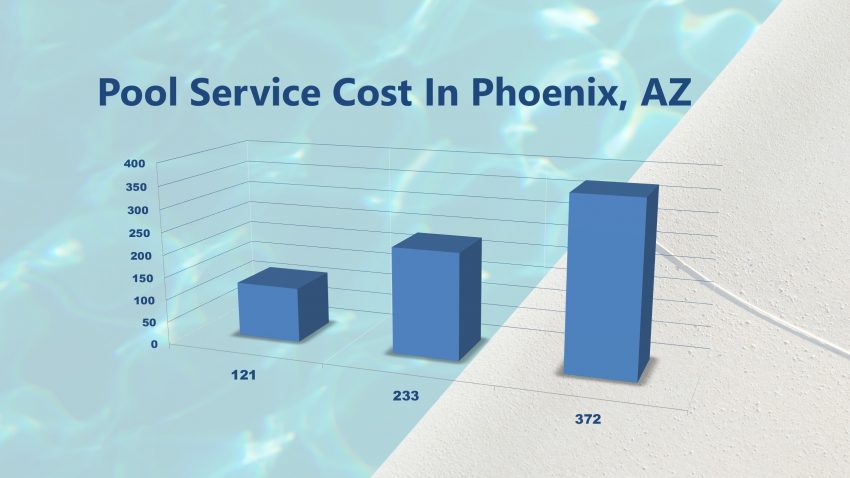
The average cost of pool service in Phoenix is $233 per one time cleaning. Average cost of pool service for one time cleaning in Phoenix ranged from $121 to $372 in 2018-2019. See below to find prices for regular cleanings and other maintenance projects.
- Weekly pool service in Phoenix costs $125. Average weekly pool service in Phoenix ranged from $100-$150 in 2018-2019.
- Bi-weekly pool service in Phoenix costs $125. Average bi-weekly pool service in Phoenix ranged from $100-$150 in 2018-2019.
- Monthly pool service in Phoenix costs $115. Average Monthly pool service in Phoenix ranged from $80-$150 in 2018-2019.
- The average opening and closing swimming pool maintenance cost is $450. Average opening and closing swimming pool maintenance ranged from $300 to $60 in 2018-2019.
- The average other services (filter replacement, repairs, utilities) maintenance cost is $400. Average other services (filter replacement, repairs, utilities) maintenance cost ranged from $140-$665 in 2018-2019.
Average Pool Cleaning Service Prices
Most swimming pool professionals charge anywhere between $75 to $100 per hour. Many offer a full range of services including but not limited to regular cleanings to maintenance of equipment to closing and opening he pool at the end of and the beginning of the season. Exact pricing can be determined by getting a free quote and the final cost will depend on the type of pool you own and its size.
Price To Clean An Above-Ground Pool vs. An In-Ground Pool
According to Homeadvisor $75-$100 per hour are the expected charges for cleaning, regardless of pool type. This is because both need the sides and bottom of the pool swept either by an automated cleaner or manually.
Looking from an average standpoint, it can be generally said total cleaning rates are less for above ground units for both those without and with a deck, just because of their more compact size when you compare them to in-ground pools. Because the interior is easy to access, the job takes less time, hence the lesser charges.
How Much Does Salt Water Pool Service Cost In Phoenix?
Salt and the cost of chemicals range from $70-$100 per year. In addition, you need to budget for $200-$800 every 3 to 7 years for the replacement of the salt cell. While there is greater up front cost of build a salt water unit, usually there are lower costs of maintenance that help offset some of the initial outlay.
Salt causes corrosion and it my (or may not) shorten the life of heaters, seals and other equipment. A professional can do a thorough inspection and suggest preventative measures to minimize the damage to your equipment. A good example of this is placing a disc made from zinc (cost $15) in your skimmer to absorb the corrosion.
Indoor Pool Maintenance Costs
Far less maintenance is required for an indoor pool but they do use around $15 of chemicals every month. Indoor structures are not exposed to dirt and debris like outdoor pools are, all the more so if you purchase a pool cover that can range in price from just $30 for a simple woven cover to more than $10,000 for an automatic version. Covers also have the advantage of helping to keep the water warm and they also reduce humidity.
Advantages of Using A Professional Pool Service
Professional and experienced Technicians must be familiar with engineering, plumbing, electrical components and chemistry to service your pool properly. However, many national companies who have high rates of turnover because of low pay frequently rely on inexperienced new employees. However, a local expert will likely offer a level of experience, ability and local knowledge that are worth a great deal. You should also search for and read positive online reviews for companies near to where you are located.
Annual Cost To Upkeep A Pool
The average cost of basic yearly upkeep on a pool is $1,500. On the high end you can expect to pay around $1,800 per year down to around $1,200 on the low end yearly upkeep costs. When you add in repairs and utilities, homeowners can expect to spend an average of $4,000 a year with costs ranging from $3,00-$5,000 per year for the pool to be kept in a good working condition.
How Much Does Weekly Pool Service Cost In Phoenix?
If you want a professional to perform weekly or bi-weekly maintenance on your pool you are gonig to be looking at costs ranging from $100 and $150 per month with an average of $125. Usually sold as service packages, they typically include the following:
- Emptying Skimmers.
- Applying Chemicals,
- Checking Water Levels
- Water Chemistry Testing
These services are vitally important to keep the pool safe and clean for use and packages like these are often the best option for homeowners who want to enjoy their pool but do not have time to complete the tasks themselves.
How Much Does Monthly Pool Service Cost In Phoenix?
Professional maintenance by an experienced technician runs on average $115 per month and ranges from a low of $80 to a high of $150 per month, depending on the services you require. Below gives you an idea for of costing for different maintenance packages and the services they include.
$80 per month
- Test water pH.
- Check equipment, filters and settings.
$90 per month
- Test water pH.
- Check equipment, filters and settings.
- Brushing
- Empty baskets and traps
- Robotic cleaners check
$150 per month
- Test water pH.
- Check equipment, filters and settings.
- Brushing
- Empty baskets and traps
- Robotic cleaners check
- Vacuum
- Skim
Free Pool Cleaning Estimates in Ahwatukee, Arizona
Receive a free pool care estimate in Ahwatukee, Arizona, by giving BPC Pool Maintenance a call today at 480-907-7959. Learn more about our pool service in Ahwatukee.
Pool Maintenance For Dummies
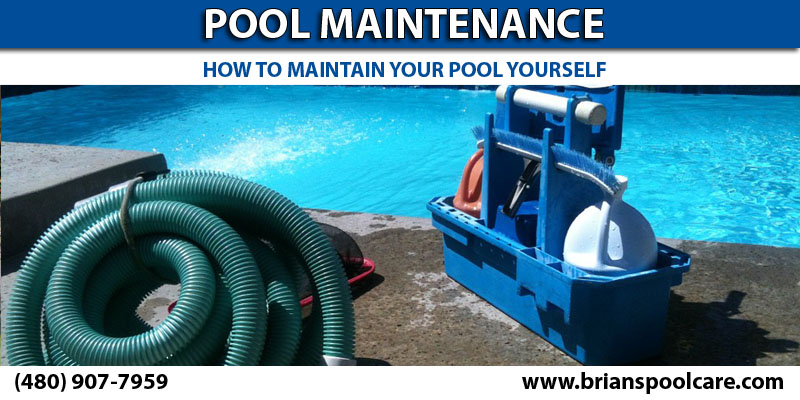
If you are Googling “Pool Maintenance For Dummies“, “Pool Maintenance 101” or “Pool Maintenance DIY”, this post should show you how to maintain your pool yourself.
In order to keep your water clean in your pool, there are a few basic maintenance steps that are needed. You can find all this information on products to use, how to care for, and how to test your water for easy pool maintenance.
Pool Pumps & Circulation
The main part of water circulation will be the pump. The pool pump will move water from the pool and send it through the filter to remove debris, dust, and dirt before sending it back into the pool.
How long should the pool pump run for?
The size of the pool, piping, size of the pump and the swimmer load will all be a part of determining just how long your pump needs to run. For the right amount of time, consult with a pool professional. They will be able to determine, based on your pool, the right amount of time that is needed to keep the pool water clear and clean. A really good rule of thumb is to run the pump for at least 1 hour ever 10 degrees of temperature.
If your pump isn’t running, the water in the pool isn’t being circulated properly or filtered right. Running the pump and circulating the water is going to be the best way for you to prevent any problems.
Pool Filtration System
The job of a filtration system is to remove undissolved debris and dirt from your water. While your skimmer basket and lint/hair basket in the pump will play a role in filtering your pool water, the main part of these systems will be the filter. If you happen to backwash your DE or sand filter too often, the filter will not be able to reach its cleaning potential and you will just be wasting water. Many filters will require backwashing whenever the pressure gauge hits 8 to 10 psi from its clean pressure. Check with a pool professional to understand the role that the pump and skimmer basket play in keeping your pool clean. Be sure that you are also consulting your owner’s manual for any type of specifics that are related to the filter type that you happen to have.
Types Of Pool Filters
There are going to be 3 types of filter that are normally used in swimming pools to help remove debris and dirt that enter into the water from the environment and swimmers.
- Sand Pool Filters: dirt will be removed from a sand filter by backwashing it or reversing your water flow. The filter will need to backwashed whenever the pressure gauge hits 7 to 10 pounds increase over your normal pressure reading. This is the pressure that is indicated on your pressure gauge whenever your filter has been cleaned. A sand filter is much more efficient whenever they are slightly dirty. However, they only need to be backwashed whenever it is required by the pressure increase. Sand filters need to be cleaned every season with filter cleaner.
- Cartridge Pool Filter: dirt will need to be removed from the cartridge filter whenever the pressure gauge shows an increase of 7 to 10 pounds over the normal pressure. Remove the cartridge from the filter and hose off the loose debris and dirt. Then soak them in filter cleaner for at least 12 hours. This will remove the grease and oil that is imbedded within the filter. Peak filter efficiency is reached when you allow the filter to dry before you reinstall it. To avoid the down time for filtration or circulation systems, it is best to purchase a second set of cartridges so that they can be changed on a regular basis with the first set.
- DE Pool Filters: similar to sand, a DE filter is able to be cleaned by simply backwashing your filter whenever the pressure increases by 7 to 10 pounds. However, once the filter has been backwashed, you will need to add new DE to coat the grids in the filter. This is done adding DE into the skimmer. In order to remove the oil that has built up within the water, your DE filter grid will need to be cleaned yearly using filter cleaner. It also needs to be disassembled yearly and cleaned thoroughly as well as inspected for any rips or tears in the grid.
Testing & Balancing Pool Chemicals
Testing your pool 2 to 3 times weekly during summer months and once a week during winter months is very important to help maintain adequate water balance and sanitizer levels as well as to help ensure swimmer comfort. A test strip will be the quickest way to test your pool water for right sanitizer levels and total alkalinity and pH levels. Proper testing will also help to make sure that your calcium levels are maintained and there aren’t any metals present in your water. These tests can be done by you or a pool professional. To be able to prevent scaling or any corrosive action and to help achieve maximum swimmer comfort, your pool water needs to be balanced to these levels:
| WHAT TO TEST | CORRECT LEVEL |
| pH Levels | 7.2 to 7.6 pH |
| Alkalinity Levels | 120 to 150 ppm |
| Calcium Levels (Concrete Pool) | 200 to 250 ppm |
| Calcium Levels (Vinyl Pool) | 175 to 225 ppm |
| Chlorine Levels | 1 to 3 ppm |
| Bromine Levels | 3 to 5 ppm |
| Metal Levels (Copper) | 0 ppm |
| Metal Levels (Iron) | 0 ppm |
Balancing your pH Levels
pH is a measure of base and acid in your pool water. The pH of your pool needs to be tested and adjusted when needed on a weekly basis. If your pH drifts to being acidic, pool surface corrosion and equipment damage can happen. If the pH drifts to the base side, then cloudy water, scaling and deposits can happen. You will need to use a pH increase to increase your pH. On the pH scale 8.5, chlorine will only be 10% active while if it is a 7.0, the chlorine will be 73% active. If you are able to maintain a pH of 7.5, your chlorine will be between 50 to 60% active. Keeping your pH in check will help you to use the full potential of your chlorine that is in your pool already. In order to lower the pH, you will need to use a pH decreaser. Follow the instruction the label for the right amount of product to add based on your pool size and test results. Take a water sample to a pool professional every 2 to 3 weeks to get a complete test and analysis.
NOTE: Be sure that you are always following the label directions when you add any type of products for pool maintenance to your pool. You should never mix various types of products together. If you are unsure of how a product needs to be used, contact a pool professional.
Calcium Levels
The amount of dissolved calcium in the water will be your calcium hardness. Low calcium hardness levels can shorten the life of your vinyl linter and cause plaster finish etching. High calcium levels can cause calcium deposits on equipment and surfaces of your pool. The right range for your calcium hardness is between 200 and 250 ppm for a concrete pool and between 175 and 225 ppm for a vinyl pool. A pool professional can tell you the best method for treating your pool if you have calcium hardness. If tests show that you have extremely high calcium levels, take a water sample to a pool professional for an analysis for more information.
Chlorine Levels
A stabilized chlorine product will help to sanitize the water as well as kill bacteria. These chlorine products will be protected from sun light degrading and are best to use in order to keep your pool water clean and clear. Most stabilized chlorine products are available in different forms such as:
- Multi-functional chlorinating granules
- Skimmer sticks
- 1 inch chlorinated tablets
- 3 inch chlorinated tablets
A pool professional will be able to determine the best type and form for sanitizing your pool. A free chlorine level of 1 to 3ppm needs to be maintained in your pool water at all times.
NOTE: You will get more out of the chemicals you use if you add them after the sun has set.
Alkalinity Levels
In order to prevent your pH from going up and down, the right total alkalinity or amount of acid buffers needs to be maintained. Your pool water needs to be tested each week to have a total alkalinity of 120 to 150 ppm. Low alkalinity may cause pH bouncing and fluctuations, but staining and corrosion. High alkalinity can also cause pH to fluctuate and cause cloudy water with scaling. In order to lower alkalinity, follow the directions from a pool professional and to raise the alkalinity, use a booster.
Metal Levels
There shouldn’t be any metals within your water. Metals within your pool water can cause your pool to stain and cause it to also turn colors. A common type of metal that is found in pool water is manganese, copper and iron. If you find metals are in your pool water, a scale and stain remover will need to be used on a regular basis to keep staining from happening. You should also determine the source of the metals and then remove it if at all possible.
Bromine Santizer
Instead of chlorine, you may want to use bromine to sanitize your pool. Bromine tablets will help to provide a good method for killing off bacteria and keep your pool clean and clear. In order to use bromine tablets effectively, a brominator needs to be installed in your pool.
Prevent Green Pool Water
Shocking your pool on a regular basis is vital to keeping your pool clean and clear. Swimmers and the environment will add waste to your pool that will need to removed regularly to help to prevent any type of issues such as cloudy water and algae.
Adding Algaecide
Preventing algae is an important part to enjoying a pool. Algaecides will act as a backup to your normal sanitization programs and prevent any algae from starting and growing in your pool water. Algaecide needs to be added after every single shock treatment that you do.
Finding Professional Pool Maintenance In Arizona
Brian’s Pool Care offers professional pool maintenance in Ahwatukee, Arizona to help pool owners experience expert pool maintenance services for an affordable price.
Steps To Backwash Your Diatomaceous Earth Filter
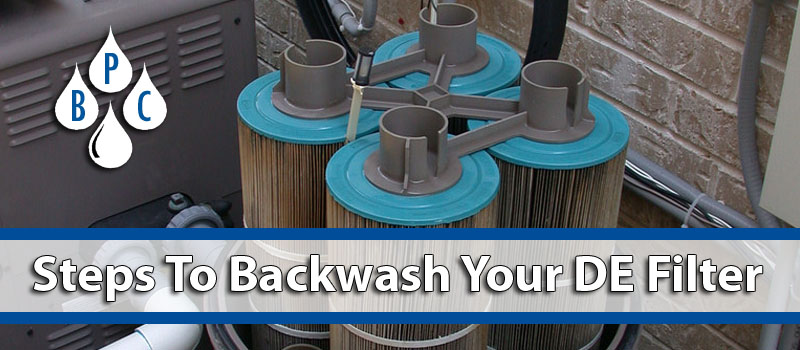
If your Googling the phrase “How To Backwash DE Filter“, this step-by-step guide should help! Backwashing a D.E. filter means that you are reversing the water flow to be able to clean out the dirt and debris that has been collected within the diatomaceous earth filter over a period of time. The pool water is pumped through the filter backwards and is forced through the drains waste port. This guide will show you the 5 main steps that are required to backwash your pools D.E. filter.
What is a DE or Diatomaceous Earth?
![]()
DE is skeletons of fossilized single cell organisms that are called diatoms. It is a white powder that is added to your filter which creates a DE cake, which latches itself to the grid inside of the filter. This cake is what is used to help filter out fine particles, dirt and debris. DE filters do take a lot of work to maintain, but they are the best types of pool filters to clean your pool water with.
How To Tell When It Is Time To Backwash Your DE Filter
![]()
This is where tracking the pressure will come in handy. Once your meter goes up by 9 to 10 pounds over your normal starting pressure, it will be time to backwash your filter. For instance, if the starting pressure is 10psi and it reaches 20psi, it is time to backwash the filter.
It won’t hurt to backwash your filter early, if you would like to, but it is more beneficial to let some of the dirt and debris build up in your filter. This build up helps to catch the smaller stuff that would make it through a clean filter. To start, let us start with showing you how to backwash your pools D.E. filter.
How To Backwash Your DE Filter Step-by-Step Guide
![]()
- Turn the power to your filter system off and then turn the multi-position valve to the one that states backwash or pull open and twist the push or pull valve on the backwash gate.
- Turn your filter system on and run it for 2 minutes in order to backwash the water out of the backwash valve or port. If you have a backwash hose that is installed, it is a great idea to place it flat on the ground with the hose pointed towards an area that you don’t mind water sitting for a while.
- After a few minutes, shut the filter system off. If you have a multi-position valve, then turn it to rinse and then turn the filter on again and run for 1 minute. If you have a push or pull valve, then run for an extra minute.
- Turn the system off again and turn the multi-position valve to filter and shut the push or pull valve.
- Next, turn the filter on and add more DE powder to your skimmer basket and ensure that you have read the filter instructions before you add the DE powder.
Steps for Backwashing Hayward DE Filters
![]()
In order to backwash a Hayward DE filter, turn your system off and twist open your backwash valve. Use your bump handle to bump the Hayward filter 15 times slowly. Keep your backwash valve open while you turn the system back on and allow it to run for a few minutes. This is perfect for rinsing out your DE that you shook off in the filter.
Turn the system off again and repeat the steps above to ensure that your DE is rinsed away. Bump it again 15 times slowly and then turn the filter system back on for a few more minutes.
Then shut your system down and close the backwash valve or replace your cap. Start your filter system up again and add more DE powder to your skimmer basket.
When & How Often Should I Backwash My DE filter?
![]()
Your DE filter pressure gauge will tell you when it is time for you to backwash your filter. The pressure gauge on the DE filter is there to tell you that the pressure is too high in the tank. The pressure will build up because of dirt and debris that is collected in the filter. So the more debris, the higher the tank pressure will be.
After you backwash the filter for the first time, take a look at your gauge reading as you will need it again so don’t skip this step. This is going to be your starting point of tracking your pressure as it increases.
How Much DE To Add After Backwashing Your DE Filter
![]()
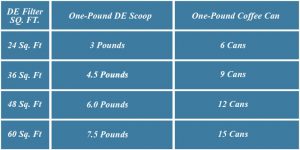
First, you will need to find the square footage of your DE filter. It should be on the side of the tank, if it isn’t then you can search Google to find out or contact the place where you purchased the filter. Diatomaceous earth is normally measured in pounds, so it will help if you have 1 pound DE scoop, if not you can use a 1-pound coffee can to measure as well.
We hope that you have enjoyed our guide “Steps to Backwash Your DE Filter”, so stay tuned for much more helpful pool maintenance and cleaning posts from Brian’s Pool Care.
Professional DE Filter Cleaning In Ahwatukee, Arizona
![]()
Receive a free DE filter cleaning quote in Ahwatukee, Arizona by giving Brian’s Pool Care a call today at 480-907-7959.
How Much Does It Cost To Maintain An Inground Pool
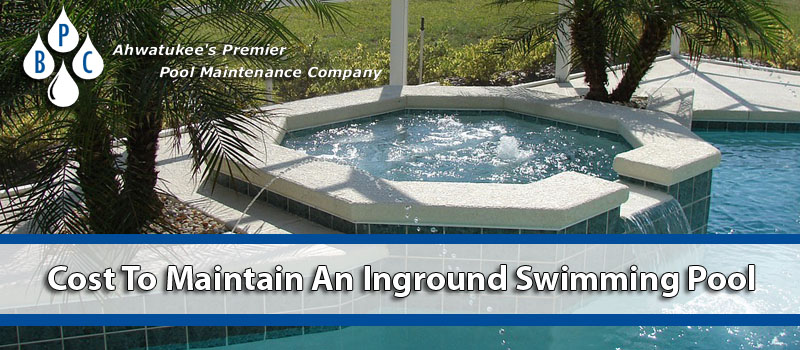
In This Post We Explore DIY Pool Maintenance Costs & DIY Pool Repair Costs
If you are searching for how much it costs to maintain an inground pool this post should help!
Owning a home that has a swimming pool is really going to make you popular during summer, but with that honor, you have to think about maintenance. The average home owner will be able to do some of the maintenance on their own; the other projects are best done by a professional. Below are steps of what a pool maintenance contractor may do.
Pool Maintenance 101
If you own a pool, then the maintenance is going to be a requirement. A neglected pool is quick to become a frog pond or ponds that are filled with algae, mosquito nests, and other aesthetic and health issues. Fortunately, the right pool maintenance is easy when you have a regular schedule.
- Skimming – This is the first step to pool maintenance. A skimmer is a mesh net that is attached to a long pole and is used to remove any floating debris like drowned insects and leaves. If it is left alone, debris will clog the filters and sink to the bottom where it can cause stains. You may also notice that debris will cause issues with the circulation system of the pool. Skim the pool every few days. Be sure to remove, dump and then clean the strainer baskets weekly.
- Vacuuming – A skimmer won’t get everything, so even when you are skimming regularly, the fine particles such as dirt and dust will sink and settle in the bottom of the pool. That is why your pool will need to be vacuumed regularly. There are 2 types of pool vacuums which are manual and automatic. Automatic vacuums will run in the bottom of the pool and suction things up in a random pattern while a manual vacuums attach to a long pole that will let you steer the suction. When you use an automatic vacuum ensure that your passes are overlapping to get all the fine debris. If you have a large pool, vacuum in sections and do it weekly.
- Brushing – Brushing will keep your pool walls clean. The type of brush you will need will actually depend on the material of your pool walls. A plaster pool will need a stiff bristled brush while vinyl, fiberglass, and tile will need a soft bristled brush. For the stubborn buildup you can use a putty knife, pumice stone or a 50/50 mix of muriatic acid and water but be sure to wear eye protection and gloves. Brush the pool walls weekly before you vacuum. Brushing will loosen up any particles for your vacuum to get.
- Cleaning Filters – There are 3 types of filters: DE, sand and cartridge. Each type will have unique requirements for cleaning. Sand filters need to be backwashed and treated with a special cleaning chemical. Cartridge filters need to be removed and sprayed down with a garden hose. The DE filters need to be backwashed, but you will need to add more DE to it. DE filters tend to trap smaller particles.
- Pool Heater Maintenance – The average pool heater can last a few years before it needs to be serviced. Sometimes there can be a build up of calcium or other minerals on the heater tubes, which restrict the operation. Whenever this happens, it is best to hire a professional to take it apart and repair the heater.
- Water Level – Your pool can lose water from splashing, natural evaporation and people getting in and out of the pool. Check your water level each time you skim the pool and clean the baskets. Water levels shouldn’t fall below the intake tube on the skimmer. This may ruin your pump. When the water level gets low, simply use a water hose to fill it to the right level.
- Maintaining pH – The pH level of your pool water will determine the alkalinity and acidity. There is a certain level of acidity that needs to be met in the pool. A pH of 7 is best. Any pH lower than 7 is too acidic. Having acidic water may damage the liner of the pool, your skin, and pool equipment. Water that is too alkaline can cloud your water and clog filters and even cause your nose and eyes to burn as well as cause itchy and dry skin. A home testing kit can tell you the pH of your pool. Adding chemicals to neutralize the water is recommended.
- Shocking the Pool – Organic contaminants like nitrogen and ammonia can build up over time in your pool. These contaminants will interact with the chlorine to create chloramines which cause the chlorine odor that comes from your pool. Just add more chlorine can take care of that. This is called shocking. Some owners will shock their pool weekly while others wait longer. Follow the instructions for your pool to ensure that your adding the right amount to fix your problem.
- Leak Detection – If you are having to add more water a lot, you could have a leak. Finding the leak is easy. Fill a plastic bucket about ¾ of the way up and mark the water line inside the bucket. Float it in the pool and mark the water line on the outside of the bucket. After a few days compare the water lines. If the amount lost is the same, then its due to evaporation, but if there is a difference then you have a leak. You will need to call a professional for repairs.
- Winterizing – If you live in an area that freezes, you will need to winterize your pool. This means you have to remove water from the pluming with an air compressor and drain as much water from the heater and filter. Remove the rest of the water with a special antifreeze made for pools. Disconnect the heater, pump, and chemical feeders. Clean and store the chemical feeders. Clean the pool and close skimmer valves and lower the water level to 18 inches below the pool edge. This will allow for freezing expansion without there being pressure on your pool liner. Lastly, shock the pool and cover it to prevent debris from falling in.
- Reopening – When it is time for swimming season, clear the debris around the pool. Refill your pool to normal levels, open your skimmer valve to get the water circulating. Test your pH level and shock the pool. Turn the pump on and leave it running. Decrease this time by 1 hour every day until the water is balanced and then you can swim.
If you are unable to maintain your pool, hire a pool service. Pool services can handle everything from closing and opening your pool for the seasons to regular treatments. Most pool maintenance services will cost around $75-$100 hourly. Some services could cost extra.
DIY Pool Maintenance Cost:
Most pool maintenance projects can be DIY projects. All it takes it the right materials and a good ability to follow directions. Here are some of the DIY pool maintenance costs.
- Skimmer Cost – A skimmer is a shallow net that is attached to a long pole. It is used to remove the debris from the surface of the water. How long it takes will depend on your pool size and amount of debris, but for an averaged sized pool its about 20 minutes. You need to skim your pool every other day. Unskimmed debris will sink to the bottom and stick or stain the pool liner. A good skimmer is around $7.
- Chlorine Cost – This is a needed item for every pool. Chlorine will neutralize any bad bacteria that can harm you. It is made in both powder and liquid and you can add it as part of your pool maintenance or inserted into a floating dispenser. A 25 bag of powder will cost around $60-$70. A 2 gallons of liquid chlorine is about $8.
- Muriatic Acid Cost – This is used to lower pH levels in the pool. The acid actually helps to prevent any bacteria, takes care of mineral buildup, and keeps the pool clean. Although, too much acid will cause damage to the pool and your eyes, skin, and nose. Follow the directions to add acid to your pool. It costs around $7.70 a gallon.
- Soda Ash Cost – Soda ash or Sodium bicarbonate is used to battle acid. It will raise the pH of your pool by neutralizing the muriatic acid that is in the pool. Adding too much of the soda ash will let bacteria to grow in your pool and cause mineral buildup. A 6lb container will cost around $8.
- Testing Kit Cost – Using a basic testing kit is needed to find the pH of your pool, by using a small water sample and adding chemicals to it. Many kits will test for acidity, bromide, chlorine, and alkalinity. The kit costs around $15. Keep in mind that most testing solutions will need to be replaced, and the replacement is around $8.
- Pool Vacuum Cost – Skimmers may not pick up the fine particles that are in the pool, so a vacuum is needed. A pool vacuum will run along the bottom of your pool and suck up tiny debris. They can be as low as $20 for a manual vacuum and as much as $600 for an automatic or robotic vacuum.
- Filters Cost – Replacement filter cartridges will be priced based on capacity and size. A basic 2 pack of cartridges can cost about $13, but a single high end filter can be around $75. Sand needs to be replaced for sand filters every 3 years. A 50-pound bag of sand will be around $12. A 25 lb. bag of DE will be about $20.
- Pool Cover Cost – Pool covers are needed for safety and it keeps debris out of your pool when its not in use. Although it is expensive, the covers will protect your pool and save your money. A good cover will extend about 2 feet past your pool edge. A good cover runs about $580.
Maintaining the pool will take less than 2 hours if it is done regularly. Routine maintenance will keep your pool clean, but it allows you to find issues earlier before they become an expensive repair. Spending some money on treatment chemicals will prevent you from having to get a pool technician to come clean your frog pond for about $60-$125 an hour.
Common Pool Repair Costs
It doesn’t matter how well maintained your pool is, it will need repairs eventually. When this happens, call a professional. Leave the pool repairs to them which keeps repairs from causing major issues.
- Pump Motor Repair Cost: The most common part of the pool that will need repairs is the pump motor. Besides the cover, the pump will affect your pool. It is a system that has multiple moving parts and is prone to fail. When it fails, the water can’t circulate, filter, or heat the pool. Check the motor regularly and address problems as early as possible. The cost to repair a pump will depend on what has failed. But replacing it can cost between $190- $375.
- Pool Filter Repair Cost: If you maintain your filter, you won’t have to worry about replacing the cartridges as often. If your filter needs cleaning a lot, it is probably trapping oils which are hard to remove. The right sized cartridge needs cleaned every 3-5 weeks. A new cartridge can cost around $13-$75.
- Sand Filter Repair Cost: Sand filters come with a pressure gauge. If the pressure is too high, the filter isn’t working right. It can cause failure and cause the tank to rupture. If the pressure is fine, but you have to clean it a lot, then you may need to replace the sand. New sand is rough, which helps to trap particles. Over time, water will make the sand smooth and reduce how it works. Sand is about $12 per bag. Replacing the filter system is around $150-$500+.
- DE Filter Repair Cost: The DE filters may fail like a sand filter. A failing DE filter will put DE in your pool. A professional will tell you if it is time to replace the valve or O-ring. Your stainless steel tank may also have pinhole leaks. When this happens, the tank needs to be replaced. Replacing a DE filter system is around $625-$725.
- Pool Leak Repair Cost: Finding out if you have leak is easy when compared to fixing it. A pool repair technician can find if the leak starts at the filter or in the pool. You can patch a vinyl liner for around $20 with a patch kit or you can hire a professional to do it for $225. Fiberglass liners need to be repaired by a professional for around $300. Gunite or concrete pools needs to be drained, sanded and properly sealed. This can cost around $900-$2000.
- Heater and Heating Tube Repair Cost: When water goes through the heating tubes and back in to the pool, minerals will buildup and cause blockages. Insects will also crawl around and in the system which can affect how it works. The average cost to repair a pool heater is around $400. If left alone, the pool heater repair can cost around $1300. It isn’t recommended that you attempt to repair your pool heater on your own.
Professional Pool Maintenance & Cleaning Services In Ahwatukee Arizona
After seeing how much it really costs to maintenance your swimming pool you can see how hiring a professional isn’t too much more money and you don’t have to do any of the work. It costs about $70-$80 a month to maintain your own swimming pool while most pool service companies only charge $100-$150 for professional pool service. It makes since to hire a professional and leave the dirty work to the experts. Give BPC Pool Maintenance a call today if your need pool cleaning in Ahwatukee, Arizona.

